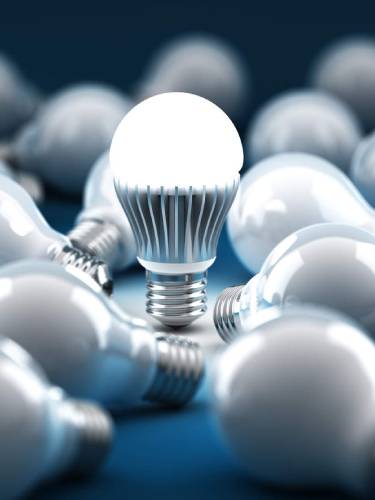Lighting

LED Lighting
LED lights are up to 80% more efficient than traditional lighting such as fluorescent and incandescent lights. 95% of the energy in LEDs is converted into light and only 5% is wasted as heat. This is compared to fluorescent lights which convert 95% of energy to heat and only 5% into light! LED lights also draw much less power than traditional lighting; a typical 84 watt fluorescent can be replaced by a 36 watt
LED to give the same level of light. Less energy use reduces the demand from power plants and decreases greenhouse gas emissions.
LEDs have a better quality of light distribution and focus light in one direction as opposed to other types of lighting which waste energy by emitting light in all directions, often illuminating areas where light isn’t required (such as the ceiling). This means that less LED lights are needed to achieve the same level of brightness given off by fluorescents and incandescent lights. Fewer lights will reduce energy consumption and will therefore be a benefit to the environment. A longer life span means lower carbon emissions. LED Lights last up to six times longer than other types of lights, reducing the requirement for frequent replacements.
CFL Lighting
CFL (compact fluorescent lamp) light bulbs are the most common type of energy-saving bulb. They are the original energy-efficient alternative to now defunct traditional incandescent bulbs. CFL bulbs don’t have a filament; instead they use an electric current to excite gases within the bulb that then cause a phosphorous coating on the inside of the bulb to glow, producing light. This method means less energy is lost to heat and the bulb uses less energy.
CFLs are a good compromise between purchase price and energy saving. They are reasonably cheap to buy, with prices starting as low as £2. This means they will pay for themselves with energy savings pretty quickly when compared to traditional incandescent bulbs.
